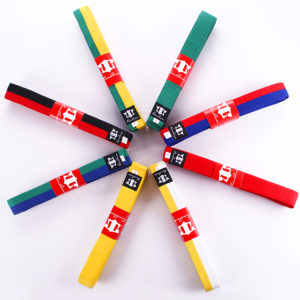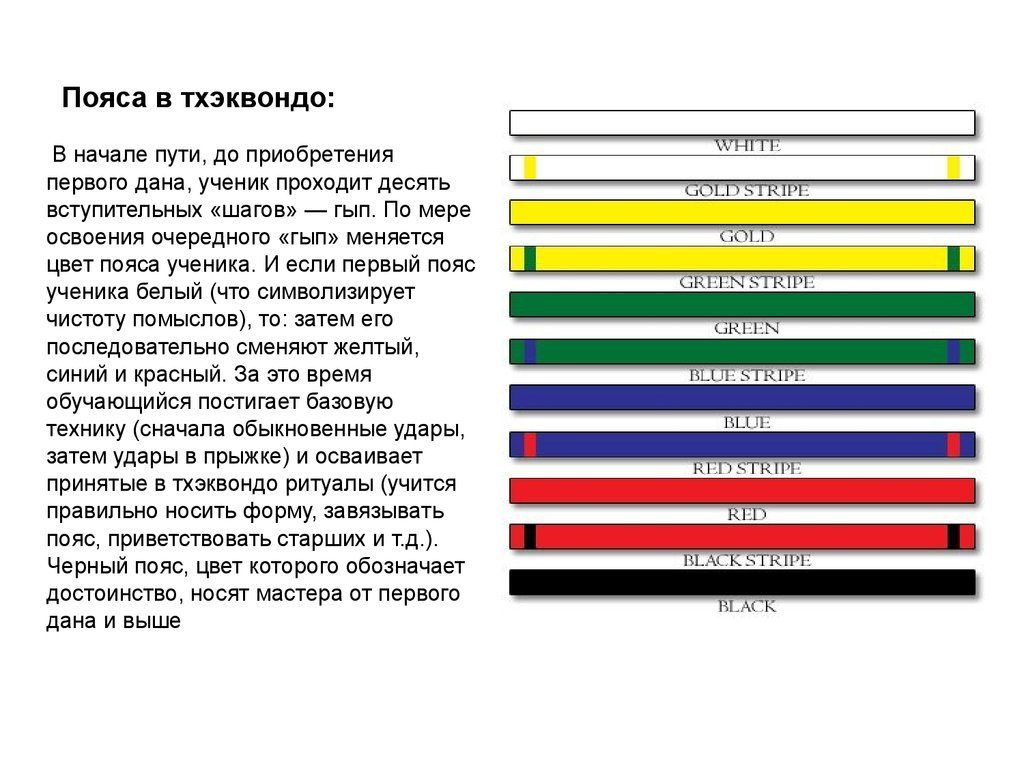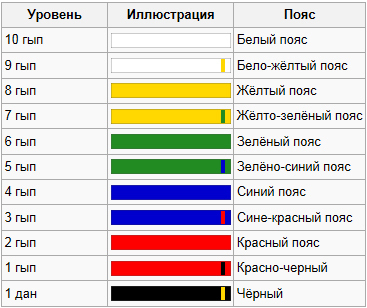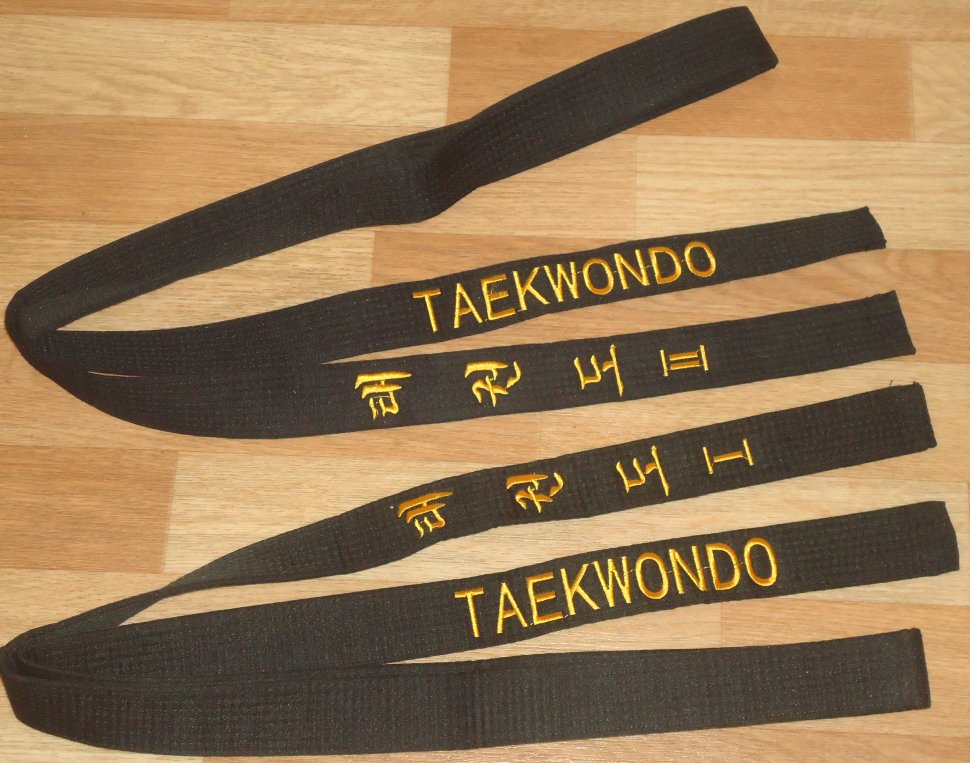 Taekwondo is a martial art known throughout the world. It came from the combination of Japanese carriage and traditional Korean wrestling. The first mentions of taekwondo date back to the mid-twentieth century. This type of wrestling was created and popularized by General Choi Hong Hi. He laid down not only techniques, but also rich spiritual practices.
Taekwondo is a martial art known throughout the world. It came from the combination of Japanese carriage and traditional Korean wrestling. The first mentions of taekwondo date back to the mid-twentieth century. This type of wrestling was created and popularized by General Choi Hong Hi. He laid down not only techniques, but also rich spiritual practices.
Taekwondo is more than just a sport, it is a philosophy of life. Behind physical competitions to master certain skills there is enormous intellectual and spiritual work. Each student must go from a clueless beginner to a master who not only executes the techniques perfectly, but also knows the history of Taekwondo perfectly. In the process of honing physical skills, a person must go through the path of spiritual development, learn discipline, internal control and peace.
Belt system in taekwondo
To indicate the level at which the student is, special belts are used, corresponding to the level of the person’s skills. They are divided into two types:
- colored;
- black.

Students of color receivewho are still learning and honing their physical skills. After achieving mastery of striking techniques, a person will have to train his spirit more than his body.
REFERENCE! The levels of colored belts are divided into ten levels and are called “kup” (or “kyp”, “gyp”. The word is derived from the Korean 급 - level). The black belt level is defined as “dan”.
- The maximum skill level is designated ninth dan. But achieving it is many times more difficult than level 10. There is also an age limit.
IMPORTANT! Until the age of 15, a student is not eligible for a black belt.
- It is believed that a child, due to his age, is not able to understand the spiritual practices of taekwondo so deeply. In such a case, it is not “dan” that is awarded, but “phum”, the maximum level of which is the fourth.
- To indicate level “Phum” a red belt with a black notch is used.
Belts in WTF and ITF
Taekwondo has a complicated history. Due to internal differences, the martial art was divided into two main federations.
- World Taekwondo Federation (World Taekwondo Federation - WTF).
- International Taekwondo Federation (International Taekwondo Federation - ITF).
REFERENCE! Now both of these federations have significant influence in the sports world. But only the WTF participates in the Olympic Games.
Despite serious disagreements at the beginning of the journey, The meanings of the belts and their color remain unchanged. Although now you can find many small federations with their own belts.
The main colors are considered to be those developed by Choi Hong Hee back in the early days of taekwondo.. Each federation may make minor changes, such as replacing the colored stripe along the edges with a two-tone color option.But the spiritual meaning remains the same, despite the differences between the federations and the passing decades.
Colored belts in order
The level at which the student is located and the corresponding color of the belt were chosen for a reason. Behind each of them there is a deep philosophical meaning. We'll tell you about all the belts shown in the photo.

10 kup - white belt
Given at the very beginning of the journey. Means "White is the color of a blank sheet, the color of snow, with whom we celebrate the New Year." A new clean path on which taekwondo will be drawn with your own labor.
9 kup - white belt with yellow stripe
After achieving some progress, the student rises to the next level and receives 9 kup. It is symbolized by a belt, which differs from white only by the presence of a yellow stripe.
8 kup - yellow belt
How the rising sun above the horizon begins to illuminate the earth and marks the beginning of the day, so the student begins to see and understand the path that lies ahead of him and takes his first steps along it. The color of the sun chosen for the 8th kupa will illuminate the path and help you walk along it.
7 compartment - yellow belt with green stripe
The green patch becomes an intermediate step to the belt of a new color. It is made on yellow canvas and is available to those who have earned 7 coupons.
6 kup - green belt
Buds blooming on branches mark the beginning of spring. And nature, having left the white snow behind, begins to acquire colors and life. The student has already taken his first steps and begins to understand the path of taekwondo. But he is still weak and young, and the whole journey is still ahead. The greenery chosen for the 6th kupa acquires such a symbolic meaning.
5 kup - green with blue stripe
The next small but important step up the levels of mastery is the 5th compartment. Its color is green with a blue stripe. This is an exact reflection of the step completed.
4th class - blue belt
The endless sky and the unreachable depths of the seas. A student of this stage begins to understand the vastness of the world, its depth and beauty. Takes flight across the sky and rises above the world. And descending to the depths of the ocean and the philosophy of taekwondo.
3 kup - blue color with red stripe
Traditionally, an odd number is given to indicate a transitional level and has, in addition to the main color, an additional one. This is how a red tint appears on a blue background.
2nd compartment - red belt
The color of nature's maturity, the color of autumn and harvest. The time when the choice has already been made and the final preparations for the trip are ahead. Just as the fruits on the trees turn red at the time of their ripening, so the student’s knowledge reaches maturity and readiness for subsequent tests.
1 package – red with black stripe
We've come a long way. There are only black steps ahead. The black patch indicates the first step taken along the path of learning taekwondo.
Black belts
The skill levels of taekwondo practitioners who have reached the rank of master are called “dan”. Just as black is obtained from the union of all colors, so the student who has comprehended all aspects achieves black.

IMPORTANT! This is the color of wisdom, speaking not only of high technical skills, but also of the same high moral and spiritual values.
Taekwondo has 9 Dan levels. But even after reaching first dan, a person does not become a master. Levels 1 to 3 dan are considered the level of beginning masters. They are available for children under 14 years of age.
IMPORTANT! If a taekwondo player is under 15 years of age, he cannot obtain a black belt. Before the 14th birthday, the athlete reaches the level of "phum", which symbolizes a black belt with a red stripe. This level has 4 steps: from 1 to 4 phum.

And only upon reaching the fourth dan does a student become part of the host of masters.
- For getting 1st–3rd dan A taekwondo player undergoes certification for the level of technical skills and knowledge of techniques. But this does not allow the commission to assess the level of spiritual development.
- For achievement 4 dan You will not only need to demonstrate your skills, but also pass a written exam. There are also time limits for achieving 4th dan. To get just the opportunity to pass for 4th dan, you need to practice taekwondo for at least 7 years. In practice, obtaining a 4th degree black belt takes much longer, often more than 10 years.
IMPORTANT! Such a long period of time is necessary to know whether a master has truly achieved spiritual mastery. Masters will carefully study the actions and achievements of a taekwondo player. And if they are not satisfied with the result, they will refuse to award the 4th dan.
Subsequent advancement will be much more difficult and will take much longer. But every step will carry enormous weight. Every person who has reached 4th dan has weight in the world of taekwondo. And he can already open his own schools to train students.


 1
1





